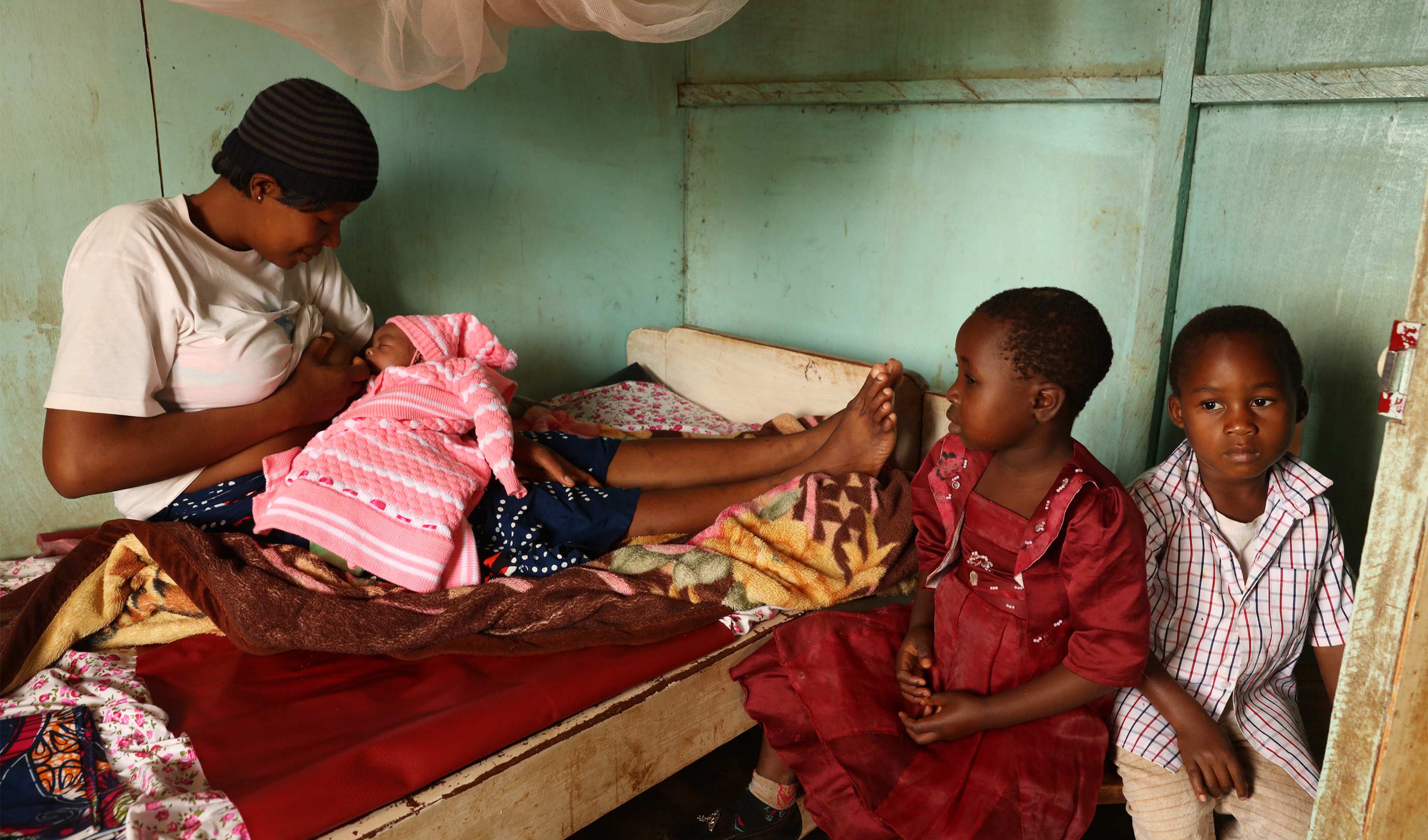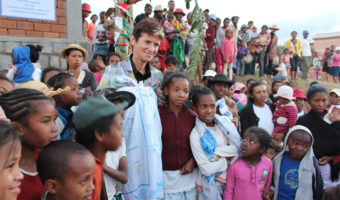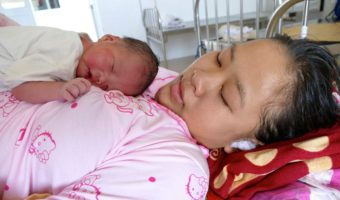The Global Financing Facility (GFF) for women, children and adolescents helps governments to prioritise and increase investments in health, nutrition and other critical sectors to ensure that children have the best start in life. The GFF supports governments to bring together partners committed to ending preventable deaths and improving reproductive, maternal, newborn, child and adolescent health and nutrition (RMNCAH-N) and harness their experiences and financial resources.
Launched in 2015 to accelerate progress on the Sustainable Development Goals and contribute to closing the huge RMNCAH-N financing gap, the GFF is a catalytic and country-driven model, which links GFF grant financing to several sources of funding to increase the efficiency and total volume of financing for the health and nutrition of women, children and adolescents.
How does GFF work?
The GFF’s partnership with a country centres on its RMNCAH-N investment case, which sets out a prioritised health and nutrition plan for that country. This is developed through an inclusive process under the leadership of the Ministry of Health (or another relevant sectoral ministry) with the involvement of the Ministry of Finance.
A country platform chaired by the government with representation from key health and nutrition stakeholders (such as civil society, the private sector, United Nations and other multilateral and bilateral agencies) designs and oversees the development and implementation of the investment case and the monitoring of its results. This helps to ensure high levels of accountability and transparency.
The GFF plays an important role in financing the health and nutrition priorities identified in the investment case. This is done through direct financing from the GFF Trust Fund which is linked to financing from the World Bank’s International Development Association (IDA) and the International Bank for Reconstruction and Development (IBRD), as well as by bringing together multiple other sources of financing, including additional domestic resources for health and nutrition; aligning complementary external financing from bilateral and multilateral donors, foundations, and others; and crowding in global and local private sector resources and innovative financing.
‘The GFF seeks to increase the efficiency and total volume of financing for the health and nutrition of women, children and adolescents.’
In all GFF-supported countries, the financing is focused on the specific priorities identified in the investment case to reduce preventable mortality and improve health, nutrition and development outcomes for vulnerable populations of women, children and adolescents. To date, 27 countries are receiving financing from the GFF Trust Fund, with expansion to an additional 23 countries anticipated by 2023.
What about early childhood development?
Since the GFF-supported country investment case identifies vulnerable population groups, gaps in coverage of high-impact interventions, and geographic areas left behind, it is not surprising that the early years have been so important in almost all investment cases and implementation plans to date.
As part of the United Nations Every Woman Every Child initiative, the GFF embraces the importance of investing in the early years of a child’s life to give all young children access to quality services that improve their health, nutrition, learning ability and emotional well-being. This includes addressing their health and nutrition needs, providing early stimulation and learning opportunities and protecting them from the kinds of stress often faced by children who are displaced, in fragile settings, orphaned, and experiencing abuse or neglect. The GFF supports early childhood development as part of the continuum of prevention and care for pregnant women, mothers and babies during and after birth, and in children’s early years through adolescence, with the Nurturing Care Framework (World Health Organization, Unicef and World Bank Group, 2018) providing a helpful roadmap for action.
With a strong emphasis on measurable results, the GFF tracks core impact indicators across its portfolio and the majority are drivers of and linked to improved early childhood development outcomes. They include maternal mortality ratio, newborn mortality, under-5 mortality, child stunting, moderate to severe child wasting, adolescent fertility and, pending the results of ongoing indicator development research, a measure of child development.
How does GFF support early childhood development?
The GFF fosters an integrated approach to helping children survive, thrive, and transform. This is more likely to generate long-lasting impacts than standalone projects. The prevention of stunting is a necessary – but on its own insufficient – way to achieve healthy child growth and development. Yet efforts to reduce stunting and efforts to scale-up early childhood development services are frequently not coordinated at country level or by the global community, and often lack interventions on both the demand and supply side.
‘The majority of core impact indicators are drivers of and linked to improved early childhood development outcomes.’
The GFF seeks to address this imbalance in low-income countries, such as Rwanda, and also among underfunded populations in lower middle-income countries, such as Indonesia and Guatemala, which are lagging behind on stunting and other adverse child development outcomes.
In Cameroon, for example, child malnutrition remains widespread, a situation that has stagnated for over 20 years and is characterised by enormous disparities. The prevalence of under-5 stunting was 24.2% in 1991 and 32% in 2014. To address the determinants of chronic malnutrition, a combination of IDA financing and GFF Trust Fund resources is supporting increased utilisation and improved quality of health and nutrition services for vulnerable women, children and adolescents.
Nutrition interventions include micro-nutrients for community-based distribution, the promotion of optimal feeding practices for infants and young children during prenatal, delivery and postnatal care, including immediate and exclusive breastfeeding, the management of acute malnutrition and promotion of women’s nutrition, notably for adolescents and pregnant women. The focus on improving the nutritional status of adolescent girls prior to the start of childbearing is supported by evidence showing that stunting often begins in utero.
In addition, the project has an innovative component, Kangaroo Mother Care (KMC), supported through a development impact bond. Early attachment and parent–child bonding are key outcomes of the approach, along with reduction of low birthweight and neonatal mortality and improved infant growth and development. By delivering both nutrition and early stimulation services (through support to mothers and other caregivers for responsive child feeding practices and promoting KMC for low-birthweight infants) the GFF is helping to ensure that children in Cameroon will grow and develop to their full potential.
Another example of integrated programming for healthy child growth and development will be scaled-up in Cambodia, one of the countries that have joined the GFF more recently. Although Cambodia has experienced strong economic growth and significant poverty reduction over the past two decades, there is still slow progress on key human capital (health, nutrition and education) outcomes, with major disparities found in rural areas among remote, indigenous and socioeconomically disadvantaged populations. Maternal mortality remains unacceptably high, progress in reducing under-5 mortality has not been matched in neonatal mortality, and high levels of undernutrition in women (underweight, anaemia) and children (stunting and wasting, anaemia) are a significant public health concern.
Analysis of Cambodia’s health system reveals a similar pattern of accelerated progress combined with ongoing deficits. While there have been increases in facility-based deliveries, use of antenatal care, and coverage of polio-3 vaccinations, the availability and quality of crucial maternal and child health services are both still very variable; there is low community awareness of and demand for preventive, promotive and curative health services; and coordination and accountability for improved RMNCAH-N outcomes are limited at all levels.
‘Early child development is at the heart of the Global Financing Facility’s work with governments because of its enormous impact.’
The GFF will co-finance provision of maternal and child health and nutrition services that aim to address several of the key issues prioritised in the investment case for RMNCAH-N, including the reduction of neonatal mortality and child undernutrition. In addition to the Royal Government of Cambodia, the governments of Germany and Australia have pooled financing through the IDA investment, aligning their resources behind the draft investment case. The investment’s target groups include women who are pregnant or breastfeeding and children in the first 1000 days of life who are living in provinces where health and nutrition outcomes are lagging, poverty levels are high and there are gaps in the supply-side readiness of services.
Prioritised services will increase access to, and the coverage, quality, and quantity of antenatal care, including maternal nutrition; expand the screening, management and treatment of Severe Acute Malnutrition (SAM) nationwide; increase coverage of and access to quality delivery care; increase the availability of growth monitoring and promotion in health facilities and communities; and improve early and essential newborn care practices. The government also seeks to increase the availability and quality of services to promote good nutrition for mothers, infants and young children (including early- initiation and exclusive breastfeeding and complementary feeding) in health facilities and communities; improve quality and quantity of post-natal care; increase the delivery of integrated outreach services; strengthen the quality of the management of sick newborn babies; improve routine immunisation and fill gaps in coverage; and improve the management/prevention of low-birthweight births.
Early child development is at the heart of the GFF’s work with governments because of the enormous impact it has – not only on child mortality rates – but also on the ability for children and adults to thrive throughout life.
For more detailed information on the GFF model, please visit the GFF website at: https://www.globalfinancingfacility.org
References can be found in the PDF version of the article.



